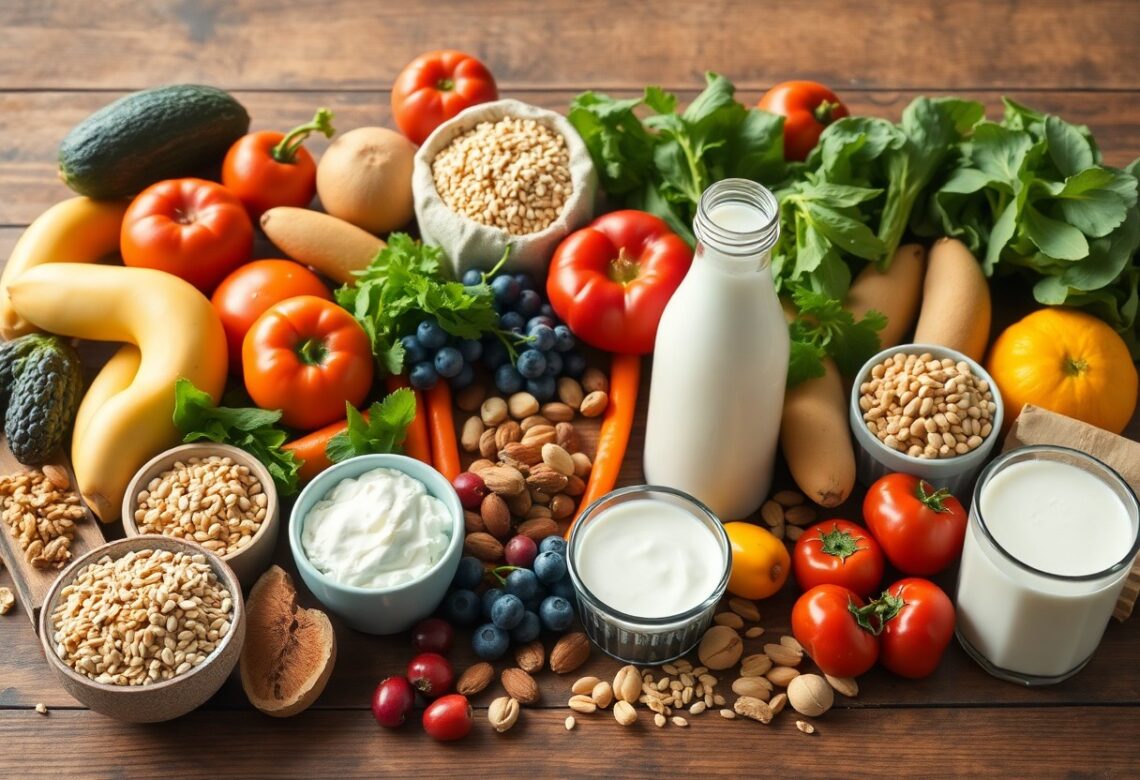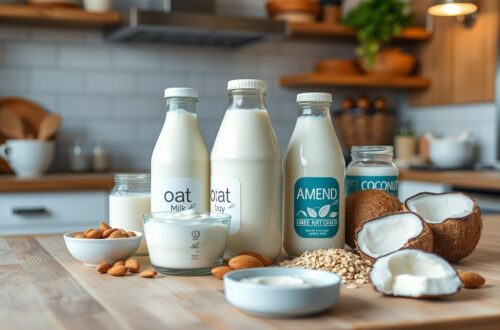Many individuals are seeking effective ways to shed pounds while adhering to a dairy-free lifestyle. This informative guide will provide you with vital guidelines to help you successfully navigate your weight loss journey without the inclusion of dairy products. You’ll learn about suitable food choices, portion control, and nutrient-dense alternatives that align with your weight loss goals. By following these principles, you can create a balanced, dairy-free diet that supports both your health and weight management aspirations.
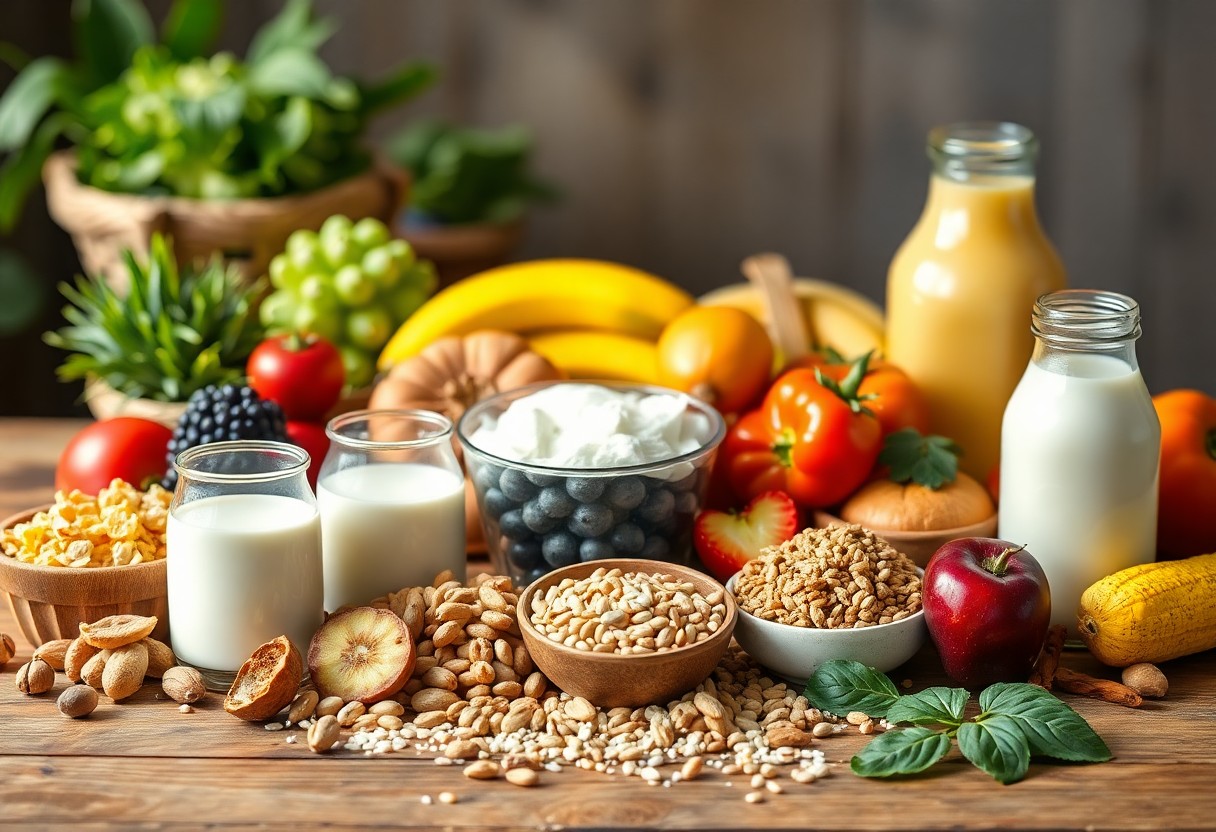
Key Takeaways:
- Focus on Whole Foods: Emphasize fruits, vegetables, whole grains, and legumes as part of a balanced diet.
- Incorporate Plant-Based Proteins: Consider sources like beans, lentils, tofu, and quinoa to meet protein needs.
- Limit Processed Foods: Reduce intake of snacks and meals that contain refined sugars and unhealthy fats.
- Mind Portion Sizes: Be aware of serving sizes to maintain a calorie deficit for weight loss.
- Stay Hydrated: Drink plenty of water and opt for herbal teas to support digestion and overall health.
- Plan Your Meals: Prepare meals in advance to avoid last-minute unhealthy food choices.
- Seek Nutrient Balance: Ensure adequate intake of vitamins and minerals by including a variety of food options.
Understanding Dairy-Free Diets
For those seeking to embrace a dairy-free lifestyle, understanding the foundations of dairy-free diets is crucial. A dairy-free diet eliminates all forms of dairy products, which can include milk, cheese, yogurt, and butter. This approach can be beneficial for individuals who are lactose intolerant, allergic to dairy proteins, or simply looking to cut down on animal-derived foods. By focusing on alternative sources of nutrition, you can maintain a balanced diet while exploring a variety of delicious plant-based options.
Nutritional Benefits
Across various nutrients, a dairy-free diet can help you incorporate more fruits, vegetables, whole grains, nuts, and seeds, which are rich in vitamins, minerals, and antioxidants. This dietary shift often leads to increased fiber intake and higher consumption of healthy fats, supporting your overall health and wellness. Additionally, you can still obtain crucial nutrients like calcium and vitamin D through fortified alternatives, ensuring your body functions optimally during your weight loss journey.
Common Myths
To make informed choices, it’s crucial to dispel common myths surrounding dairy-free diets. Many people mistakenly believe that eliminating dairy means sacrificing crucial nutrients or protein. However, numerous plant-based foods can provide adequate nutrition without the health issues linked to dairy products.
Plus, the perception that dairy is the only source of calcium and protein is inaccurate. You can find these nutrients in a variety of non-dairy foods, such as leafy greens, almonds, tofu, and fortified plant milks. By educating yourself about dairy alternatives, you can maintain a nutritious and balanced diet while reaping the potential health benefits of cutting out dairy products.
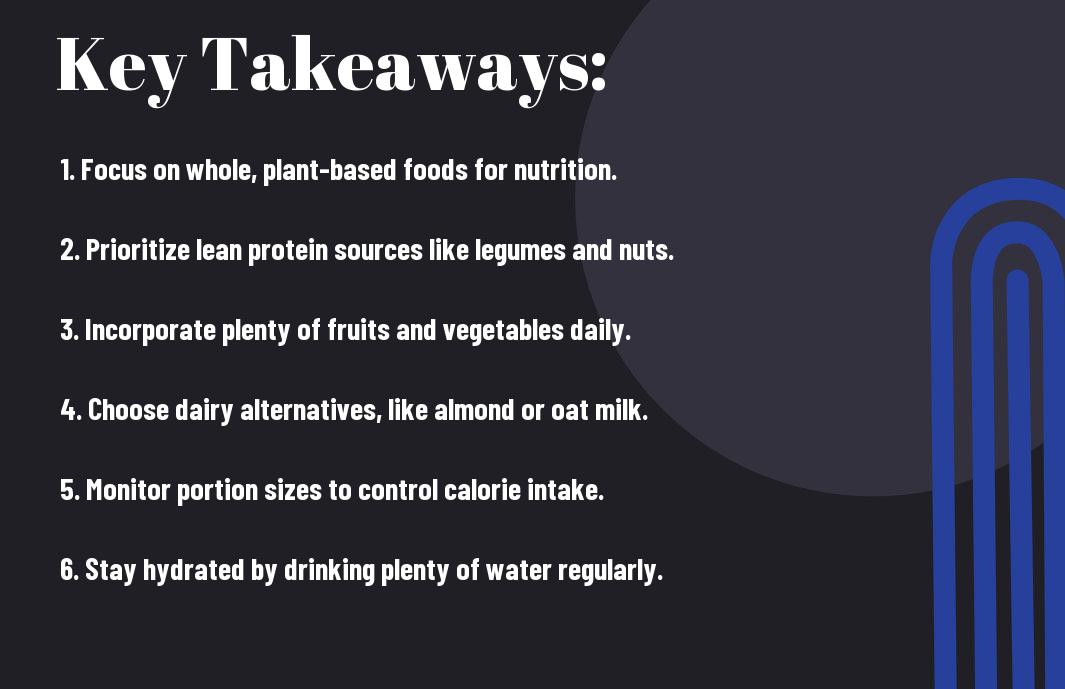
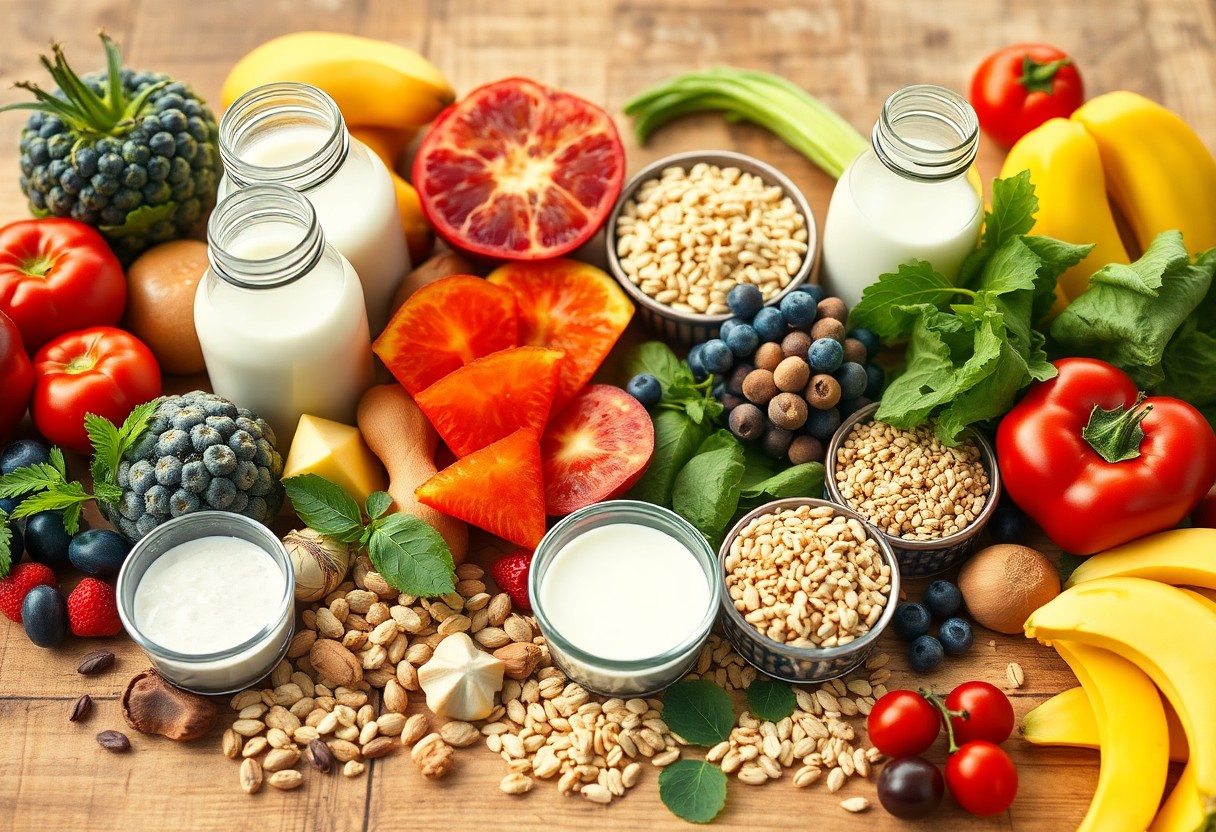
Key Components of a Dairy-Free Weight Loss Diet
Any effective dairy-free weight loss diet should focus on whole food choices, mindful eating, and a balance of macronutrients. Prioritizing fruits, vegetables, lean proteins, and whole grains will provide you with the necessary nutrients while keeping your calorie intake in check. By cutting out dairy and replacing it with nutrient-dense alternatives, you can still achieve your weight loss goals without sacrificing flavor or satisfaction.
Whole Foods vs. Processed Foods
By emphasizing whole foods, you ensure that your meals are packed with nutrients, fiber, and health benefits. Processed foods often contain added sugars, unhealthy fats, and preservatives that can hinder your weight loss efforts. Focusing on fresh produce, whole grains, and plant-based proteins allows you to feel full and energized, while also supporting your overall health.
Importance of Balanced Nutrition
For successful weight loss, you need to ensure that your diet provides a balance of carbohydrates, proteins, and healthy fats. Each macronutrient plays a unique role in your body, helping you maintain energy levels, build muscle, and keep your metabolism active.
In addition, a balanced approach will help you avoid nutrient deficiencies that may arise from overly restrictive diets. By incorporating a variety of foods, you can enjoy a wide range of vitamins and minerals, supporting your nutritional needs while promoting sustainable weight loss. This way, you can nourish your body effectively and create lasting healthy habits.
Meal Planning Strategies
Many find success in their dairy-free weight loss journey by implementing effective meal planning strategies. This involves preparing balanced meals in advance to ensure you stay on track with your dietary goals. To assist you, check out the 7-Day Nutritious Dairy-Free Meal Plan for Weight Loss, which offers a structured approach to creating nutritious meals that fit your lifestyle.
Shopping List Essentials
By focusing on a well-organized shopping list, you ensure you have all the necessary ingredients to prepare your meals. Stock up on fresh fruits, vegetables, whole grains, legumes, and dairy-free alternatives like almond milk or coconut yogurt. This preparation will not only save you time but also make it easier to stick to your diet.
Sample Meal Plans
Essentials within sample meal plans provide you with inspiration and guidance for your daily meals. These plans can help you visualize what a balanced, dairy-free diet looks like, allowing you to adapt them according to your tastes and nutritional needs. They often include a variety of meals that are low in calories yet rich in nutrients.
Strategies for successful meal planning include adapting sample meal plans to create variations that excite your palate while adhering to your dietary goals. Experiment with different proteins, grains, and vegetables to keep your meals interesting. Having a few go-to recipes can help you maintain consistency in your meal prep while ensuring you consume a variety of flavors and nutrients.
Incorporating Dairy Alternatives
Your transition to a dairy-free lifestyle can be seamless when you embrace dairy alternatives. From nut-based milks to coconut yogurts, these substitutes offer a wealth of options that can satisfy your cravings without hindering your weight loss goals. For more comprehensive insights and tips, explore our Dairy-free diet guide.
Popular Dairy Substitutes
Around the world, various dairy substitutes are gaining popularity, making it easier for you to maintain your diet. Almond milk, soy milk, oat milk, and coconut yogurt are just a few examples. Experimenting with these options will not only enhance your meals but also keep your dietary plan exciting.
Nutritional Comparison
Beside flavor, nutritional value is important when evaluating your dairy alternative options. Understanding the nutritional makeup can help you make informed choices that support your weight loss journey.
Nutritional Comparison Table
| Product | Calories (per cup) |
|---|---|
| Almond Milk | 30-50 |
| Soy Milk | 80-100 |
| Coconut Milk | 50-70 |
| Oat Milk | 130-170 |
Dairy alternatives not only offer a different taste profile but also have varying caloric values, which can significantly impact your dietary goals. Understanding these differences helps you make better choices. For instance, while almond milk is low in calories, oat milk is higher and may provide more energy, making it important to align your choices with your weight loss objectives.
Nutritional Advantage Table
| Product | Protein (grams) |
|---|---|
| Almond Milk | 1 |
| Soy Milk | 7 |
| Coconut Milk | 0.5 |
| Oat Milk | 3 |
Tips for Long-Term Success
All successful journeys require dedication and consistency. To maintain your dairy-free weight loss progress, focus on these strategies:
- Create a support system with friends and family.
- Keep a food diary to track your meals and emotions.
- Participate in online forums for shared experiences.
- Stay informed about dairy-free nutrition and recipes.
Knowing how to navigate your weight loss journey can lead to sustainable results. For more guidance, check out this Dairy-Free Diet Plan For Beginners: A Week’s Worth Of ….
Setting Realistic Goals
To enhance your chances for success, set achievable goals that align with your lifestyle. Focus on incremental changes rather than drastic shifts. Aim for specific outcomes, such as losing a certain amount of weight over a defined period or incorporating a new dairy-free recipe each week.
Overcoming Challenges
Tips for overcoming any obstacles you may encounter include anticipating cravings and planning ahead. Stay prepared with healthy snacks and meal options that align with your dairy-free diet. Do not forget, it may take time to adjust your taste preferences, but being proactive can help smooth the transition.
Also, some challenges may arise from social situations or dining out where dairy options are prevalent. In these cases, don’t hesitate to ask about ingredient alternatives or suggest restaurants with dairy-free options. Developing a strategy can empower you to navigate social situations while keeping your goals in mind.
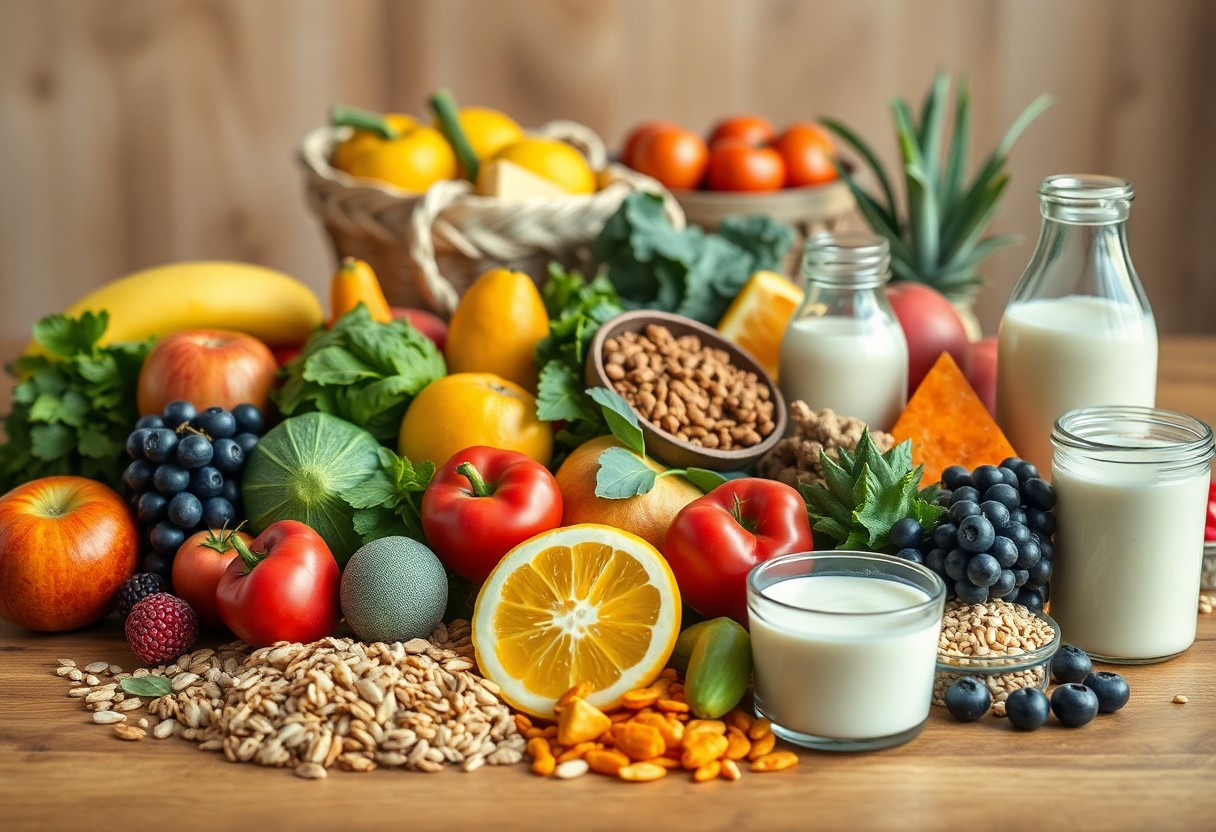
Exercise and Lifestyle Integration
Once again, integrating exercise into your daily routine is imperative for the success of a dairy-free weight loss diet. Finding activities you enjoy will make it easier to stay consistent and motivated. Aim to incorporate both cardiovascular and strength-training exercises, while also considering lifestyle changes, such as taking the stairs instead of the elevator or going for a walk during your breaks. Making movement a natural part of your life can enhance your overall well-being and support your weight loss journey.
Importance of Physical Activity
The benefits of physical activity extend beyond weight loss, contributing to better cardiovascular health, increased energy levels, and improved mood. Regular exercise can help you maintain muscle mass while you lose weight, and it amplifies the effectiveness of a dairy-free diet by boosting your metabolism. By incorporating a variety of physical activities, you enhance your body’s ability to burn calories and achieve your fitness goals.
Creating a Supportive Environment
For effective weight loss, it’s important to create a supportive environment that encourages healthy habits. Surround yourself with positive influences, whether it’s friends, family, or online communities that share your goals. Clear your cupboards of dairy products and stock up on nutritious food options that align with your dietary needs. When your space promotes health, you increase the likelihood of staying on track with your weight loss journey.
Plus, establishing a supportive environment goes beyond just having the right foods on hand. Engage with a community, whether through social media, local fitness groups or friends who share similar goals. This not only provides motivation but also accountability, making it easier for you to stay committed. Sharing your journey, celebrating small victories, and seeking encouragement from others can significantly boost your efforts and make your experience more enjoyable.
Final Words
Ultimately, adopting a dairy-free weight loss diet can be a rewarding journey toward better health and well-being. By focusing on whole, nutrient-dense foods, balancing your macronutrients, and listening to your body’s hunger signals, you can effectively reach your weight loss goals. Be sure to explore a variety of dairy alternatives and maintain a balanced approach to your meals. With dedication and the right guidance, you can thrive on a dairy-free diet while achieving the results you’re aiming for.
FAQ
Q: What is a Dairy-Free Weight Loss Diet?
A: A Dairy-Free Weight Loss Diet excludes all dairy products such as milk, cheese, yogurt, and butter. This diet is focused on consuming whole, unprocessed foods that are lower in calories and high in nutrients, aiding in weight loss while still providing important vitamins and minerals. It often includes fruits, vegetables, whole grains, nuts, seeds, and lean proteins.
Q: Can I get enough calcium on a Dairy-Free Diet?
A: Yes, you can obtain sufficient calcium from non-dairy sources. Leafy greens like kale and broccoli, fortified plant-based milk (such as almond, soy, or oat milk), tofu, almonds, sesame seeds, and legumes can help meet your calcium needs. It’s important to incorporate a variety of these foods to ensure you are receiving adequate intake.
Q: What are some dairy-free substitutes for common dairy products?
A: There are many dairy-free alternatives available. For milk, you can use almond, oat, coconut, or soy milk. Instead of yogurt, consider coconut yogurt or almond-based options. Nutritional yeast can serve as a cheese substitute, adding a cheesy flavor to your dishes. For butter, try avocado, olive oil, or coconut oil in cooking and baking.
Q: How can a Dairy-Free Diet assist in weight loss?
A: A Dairy-Free Diet can facilitate weight loss by reducing calorie intake through the elimination of high-calorie dairy products. Additionally, focusing on whole foods and plant-based ingredients encourages eating more fruits and vegetables, which are generally lower in calories and high in fiber—helping to keep you fuller for longer and supporting overall weight management.
Q: Is it possible to follow a Dairy-Free Diet while dining out?
A: Yes, many restaurants now offer dairy-free options on their menus. You can choose salads, grilled meats, vegetable dishes, and various sauces made without dairy. Always ask questions about ingredients and opt for items that are openly prepared without dairy or ask for modifications to meet your dietary needs.
Q: Are there any potential drawbacks to a Dairy-Free Diet?
A: Potential drawbacks may include nutrient deficiencies if not carefully planned. Without dairy, it’s important to ensure you are still getting enough vitamins and minerals, particularly calcium and vitamin D. Consider consulting with a healthcare professional or nutritionist to ensure your diet remains balanced and nutritious.
Q: How can I effectively transition to a Dairy-Free Weight Loss Diet?
A: To transition effectively, start by gradually cutting out dairy products. Begin with small changes, like replacing dairy milk with a plant-based alternative. Explore new recipes that incorporate dairy-free ingredients to keep meals interesting. Planning meals and snacks ahead can help maintain commitment to the diet while ensuring your nutritional needs are met. Additionally, keeping track of your progress can be motivating.
